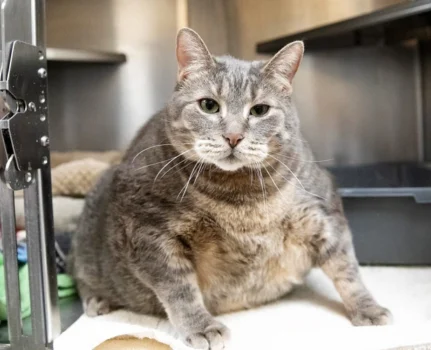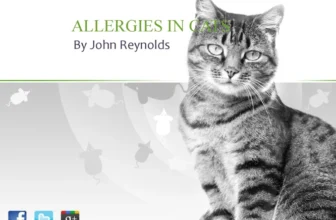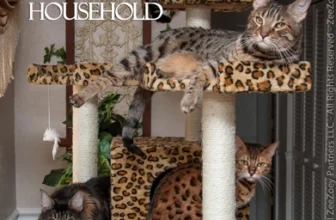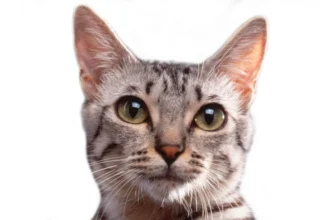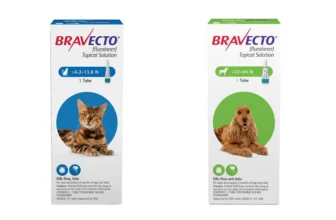As cat owners, we love to see our feline friends healthy and happy. Unfortunately, obesity is a condition that is becoming increasingly common in cats, especially the California Spangled breed. This issue not only affects their physical health but also their overall quality of life. It’s essential to understand the impact of obesity and learn ways to prevent and treat it. In this article, we’ll dive into the steps that can be taken to keep your California Spangled cat at their ideal weight and help them live a long and happy life.
Why is Obesity a Concern?
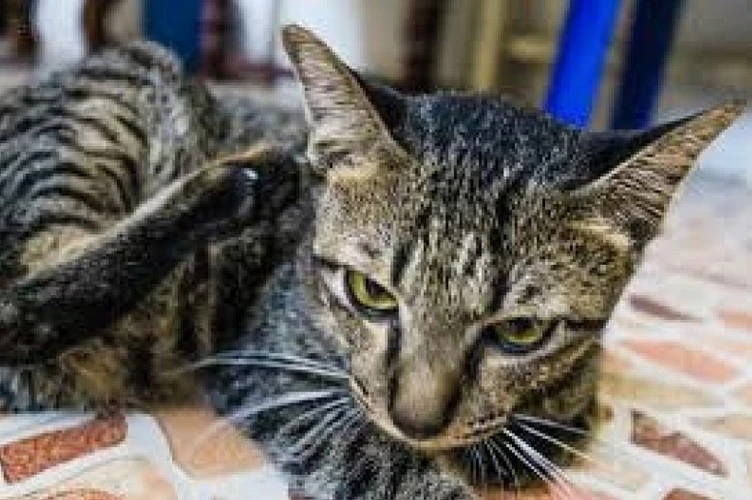
Excess weight is a serious issue for cats that can lead to harmful consequences. Obesity in California Spangled cats can affect their health and reduce their quality of life. Understanding why obesity is a concern is essential to prevent and manage this condition. In this section, we will discuss the impact of obesity on a cat’s health and quality of life. We will explore various ways to prevent and treat obesity in your California Spangled cat to ensure a longer and healthier life. Regular vet checkups are vital in preventing the root cause of obesity in cats, such as dental problems and hairballs, which are explained in our previous articles.
Impact on Health
Obesity can have serious consequences on the health of California Spangled Cats. It’s important for cat owners to recognize these risks and take action to prevent and treat this condition. Below are some of the health impacts that obesity can have on cats:
| Impact on Health | Description |
|---|---|
| Joint Problems | Excess weight puts extra pressure on a cat’s joints, which can lead to arthritis and other joint problems. |
| Diabetes | Obese cats are at a higher risk of developing diabetes, which can be a life-threatening condition if left untreated. |
| Heart Disease | Carrying extra weight can cause high blood pressure, which in turn can increase the risk of heart disease and stroke in cats. |
| Respiratory Problems | Obese cats may experience breathing difficulties due to their excess weight, which can lead to asthma and other respiratory problems. |
| Cancer | There is evidence that obesity can increase the risk of certain types of cancer in cats, including mammary and bladder cancer. |
As a cat owner, it’s important to be aware of these potential health risks and take steps to prevent obesity in your California Spangled Cat. Ensuring that your cat receives proper nutrition and regular exercise can go a long way in maintaining their overall health and well-being. If you notice any signs of obesity or health issues in your cat, it’s important to seek veterinary care as soon as possible.
Impact on Quality of Life
Obesity not only affects the physical health of your California Spangled cat, but it can also impact their quality of life. When a cat is overweight, they may struggle with everyday activities that should be easy for them. For example, jumping onto furniture or climbing stairs may become strenuous and uncomfortable for them. This can lead to a decrease in activity level and ultimately, a decrease in overall mood and happiness.
Overweight California Spangled cats may also experience self-esteem issues. They may feel ashamed or embarrassed because they are unable to move and play as easily as they once did. This can lead to depression and anxiety in some cases.
Obesity can also affect a cat’s social life. If your California Spangled cat is overweight and unable to move around easily, they may not want to play with other cats or interact with people as much. This can lead to feelings of isolation and loneliness.
The impact of obesity on a California Spangled cat’s quality of life is undeniable. However, with proper preventative measures and treatment options, this is a manageable issue that can be resolved. As a responsible pet owner, it’s important to take steps to ensure your cat’s physical and emotional well-being.
Some related articles:
- Hairballs in California Spangled Cats
- How to Keep your California Spangled Cat’s Teeth Healthy
- Treatment for UTIs in California Spangled Cats
- Common Allergies in California Spangled Cats
- The Importance of Vet Checkups for California Spangled Cats
- Managing Stress in California Spangled Cats
- Common Skin Conditions in California Spangled Cats
- Kidney Disease in California Spangled Cats
Preventing Obesity
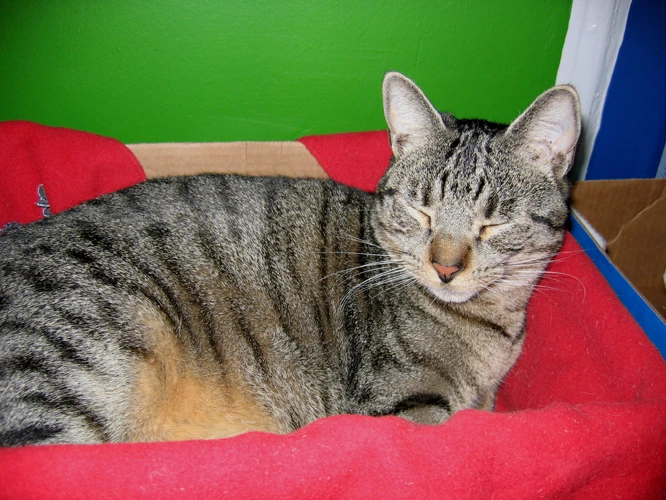
As pet owners, we want our furry companions to be healthy and happy. One of the most common health concerns facing California Spangled cats is obesity. However, with the right approach, you can help prevent obesity from affecting your cat’s overall wellbeing. In this section, we’ll explore some actionable steps that you can take to ensure that your cat maintains a healthy weight. Let’s dive in!
Proper Diet
Feeding your California Spangled cat a proper diet is essential for preventing and treating obesity. A balanced diet that provides all the necessary nutrients is key to maintaining a healthy weight. Let’s take a look at some guidelines for a healthy diet for your feline friend.
Guidelines for a Healthy Diet
| What to Include | What to Avoid |
| High-quality protein sources such as chicken, turkey, and fish | Empty calorie foods like candy or chips, which have no nutritional value |
| Low carbohydrate sources like vegetables and fruits | Large amounts of grains like rice, wheat, and soy which may lead to weight gain |
| Dietary fiber sources like whole grains and vegetables | Foods high in fat such as cheese and bacon |
| Easily digestible sources of carbohydrates such as sweet potatoes and peas | Foods with added sugars or artificial sweeteners which may lead to weight gain and other health issues. |
| Foods that are nutritionally balanced with appropriate levels of vitamins and minerals | Salt and salty foods that can lead to high blood pressure and other health issues |
Feeding Tips
To help maintain a healthy weight for your California Spangled cat, follow these feeding tips:
1. Use a food measuring cup to ensure you are not overfeeding your cat.
2. Avoid feeding your cat table scraps or human food as it can disrupt their diet and lead to weight gain.
3. If using wet food, avoid feeding your cat large portions. Too much wet food can be high in calories.
4. Provide your cat with fresh water at all times to promote hydration and kidney function.
By following these dietary guidelines and feeding tips, you can help prevent and treat obesity in your California Spangled cat.
Exercise and Play
As with humans, exercise and play are essential for maintaining a healthy weight and lifestyle in California Spangled Cats. Regular exercise and playtime can help burn off excess calories, increase muscle mass, and improve overall health and well-being.
Types of Exercise:
There are various types of exercise that cats can participate in, including indoor and outdoor activities. Some examples of indoor activities that you can participate in with your California Spangled Cat include interactive toys, such as feather wands, laser pointers, and balls. These toys can provide much-needed exercise and playtime indoors, especially when the weather or other factors may prevent outdoor activities.
Outdoor activities like walking with a harness or letting them roam in a secure area also provide excellent opportunities for exercise. It is important to remember to always supervise your cat while they are outside, as there are always risks associated with outdoor activities.
How Much Exercise?
The amount of exercise will vary depending on the cat’s age, weight, and overall health. Generally, indoor California Spangled Cats should have at least 15-20 minutes of playtime each day, while outdoor activities should be supervised and can consist of walking or other activities for 30 minutes to an hour.
It is important to remember that exercise is not a substitute for dietary adjustments. Feeding your cat a proper diet will have a more significant impact on their health and weight than exercise alone.
Playtime and Quality of Life:
Apart from its physical benefits, regular exercise and playtime can also have a significant impact on a cat’s mental health. Playtime can help relieve stress and promote a healthy bond between you and your California Spangled Cat. Interactive play also encourages mental stimulation and can prevent depression and anxiety.
Incorporating regular exercise and playtime into your California Spangled Cat’s lifestyle is crucial for maintaining their overall health and well-being. Consult your veterinarian for specific recommendations about your cat’s exercise needs and remember to always supervise outdoor activities.
Monitoring Food Intake
Maintaining a healthy weight for your California Spangled Cat is crucial for their overall well-being. Monitoring your cat’s food intake is an essential step towards preventing obesity. Monitoring your cat’s food intake includes keeping track of how much they are eating and making sure they do not have access to food when they should not. Here are some tips for monitoring your cat’s food intake:
| Tip | Description |
|---|---|
| Measure | Use a measuring cup to provide your cat with precise portions on a schedule. |
| Avoid Free Feeding | Do not leave food out all day for your cat. Instead, provide them with set meals at certain times of the day. |
| Control Treats Intake | Treats should make up no more than 10% of your cat’s daily calorie intake. Keep track of how many treats they receive and adjust their meals accordingly. |
| Observe Behavior | Notice how much your cat eats in one sitting. If they are still hungry, consider feeding smaller, more frequent meals throughout the day. |
Keeping track of your cat’s food intake will help prevent overeating and obesity. Remember to consult with your veterinarian for advice on how much and what type of food is appropriate for your cat. By monitoring their food intake, you can help your California Spangled Cat maintain a healthy weight and improve their overall health.
Treating Obesity
Dealing with obesity in California Spangled cats can be a challenge, but it is crucial for their overall wellbeing. When prevention measures fail, it’s time to explore the available treatment options. This is where treating feline obesity comes into play. In this section, we will explore the steps you can take to help your cat achieve a healthy weight and avoid the numerous health complications that come with obesity. From veterinary care to dietary adjustments and customized exercise plans, we’ll cover it all. So, let’s dive in!
Veterinary Care
When dealing with obesity in California Spangled Cats, veterinary care is an essential component of their treatment. A veterinarian will be able to assess the cat and create a personalized weight loss plan that takes into account their specific needs and health issues.
During the initial examination, the veterinarian will perform a physical exam to assess the cat’s overall health. They may also perform blood tests and other diagnostic tests to rule out any underlying health issues. The veterinarian will then work with the cat’s owner to create a diet plan that is appropriate for their age, weight, and health condition.
To ensure that the cat is losing weight in a healthy way and not experiencing any adverse effects, regular check-ups are required. The veterinarian may recommend frequent weigh-ins to track progress and provide guidance on adjustments to the diet plan.
In some cases, medical intervention may be required. This may include the use of prescription medications to aid in weight loss or to address any health issues that may be contributing to obesity. It is important to note that any medications should only be prescribed and monitored by a licensed veterinarian.
Overall, veterinary care is a crucial aspect of preventing and treating obesity in California Spangled Cats. A veterinarian can provide the necessary guidance and support to help cats achieve a healthy weight and maintain their overall health.
| Key Points for Veterinary Care: |
|---|
| Physical examination and diagnostic tests to rule out underlying health issues |
| Creation of a personalized diet plan |
| Regular check-ups to monitor progress and make adjustments |
| Medical intervention, if necessary, under the guidance of a licensed veterinarian |
| Overall support and guidance to help cats achieve a healthy weight and maintain their health |
Dietary Adjustments
When it comes to treating obesity in California Spangled Cats, dietary adjustments are a crucial part of the process. This involves making changes to the type and amount of food your cat consumes. Here are some dietary adjustments to consider:
- Portion Control: One of the primary modifications that need to be made involves portion control. Controlling the amount of food your cat consumes each day is essential to limiting calorie intake. Make sure to measure out their food and stick to a consistent feeding schedule.
- High-Quality Food: Make sure to invest in high-quality cat food that is complete and balanced. Look for labels that include the words ‘lean’ or ‘light’ to help ensure that the food is lower in calories. Avoid feeding your cat table scraps or human food as these can also contribute to obesity.
- Dietary Supplements: Supplements may help your cat lose weight by providing additional nutrition without adding a lot of calories. Supplements like fiber and probiotics can help keep their digestive system healthy while reducing their calorie intake.
- Slow Feeding: Slow feeding is another technique to help limit calories. This involves using specialized bowls or toys designed to slow down your cat’s eating pace and prevent them from overeating.
- Water: Hydration is key for all animals, and it’s especially important in preventing and treating obesity. There should always be a source of clean and fresh water available for your cat at all times.
These dietary adjustments should be made in consultation with your veterinarian with the aim of creating a balanced diet that meets the nutritional needs of your cat. Along with veterinary care and exercise plans, dietary adjustments can help your California Spangled Cat achieve and maintain a healthy weight, leading to a happier and healthier life.
Exercise Plans
Regular exercise is crucial in treating obesity in California Spangled cats. However, it’s important to gradually introduce exercise to avoid any health complications. Here are some exercise plans for your feline friend:
- Interactive toys: engaging your cat in interactive toys such as balls with bells or feathers attached can encourage your cat to move around.
- Cat trees and perches: providing your cat with vertical spaces such as cat trees or perches can motivate your cat to climb and jump.
- Walking on a leash: while it is not common for cats, California Spangled cats are an intelligent breed, and walking them on a leash may become a great exercise alternative. Always use a harness designed for cats to avoid any neck injuries.
- Scheduled playtime: setting aside time to play with your cat can be a great strategy to keep your cat engaged and active. Always remember to supervise playtime to avoid any mishaps and monitor your cat’s energy levels.
It’s essential to keep in mind that your cat’s exercise plan will depend on several factors, including the cat’s age, weight, and overall health. Be sure to consult with your veterinarian to determine the best exercise plan for your California Spangled cat. In addition to exercise, a proper diet and regular veterinary care are pertinent to treating obesity in your feline friend.
Conclusion
In conclusion, preventing and treating obesity in California Spangled cats is a crucial aspect of maintaining their health and quality of life. It is important to ensure that they are receiving a proper diet and engaging in regular exercise and play to prevent obesity from occurring. Regular monitoring of food intake is also important to prevent overeating.
However, if obesity does occur, seeking veterinary care is the best course of action. A veterinarian can provide sound advice on dietary adjustments and devise an exercise plan that is suitable for the cat’s needs. It is important to note that any changes made to the cat’s diet or exercise routine should be done gradually to prevent any adverse effects.
Owners should also be aware that preventing obesity is much easier than treating it. By incorporating a healthy diet and exercise routine into their cat’s lifestyle from an early age, owners can prevent the development of obesity and ensure a long and healthy life for their beloved pet.
Overall, by understanding the importance of preventing and treating obesity in California Spangled cats, owners can take the necessary steps to ensure their cat’s health and well-being. With proper care and attention, these cats can live long, healthy, and happy lives. So, let’s take care of our feline friends and help them stay as healthy and happy as possible.
Frequently Asked Questions
How can I tell if my California Spangled cat is overweight?
There are a number of ways to tell if your cat is overweight, including feeling their ribcage and waistline and observing their overall body shape.
What are the health risks associated with obesity in cats?
Obesity in cats can lead to a range of health issues, including diabetes, heart disease, and joint problems.
Can I help prevent obesity in my California Spangled cat by feeding them a raw food diet?
While feeding a raw food diet can be a healthy choice for some cats, it is important to ensure that your cat is receiving all essential nutrients in the right amounts. Consult with a veterinarian before switching your cat to a raw food diet.
Is it okay to feed my California Spangled cat catnip to encourage playtime?
Yes! Catnip can be a great way to encourage playtime and exercise for your cat.
How often should I monitor my California Spangled cat’s food intake?
It is recommended to monitor your cat’s food intake on a daily basis and adjust accordingly based on their activity level and weight.
Can I help my cat lose weight by giving them smaller portions of their regular food?
Yes, portion control is an important aspect of helping your cat lose weight. Consult with a veterinarian to determine how much food your cat needs.
What are some good examples of toys to encourage exercise and playtime for my cat?
Some good examples of toys to encourage exercise and playtime include interactive toys, such as laser pointers and puzzle feeders.
Can my California Spangled cat be obese even if they look normal to me?
Yes, a cat can be overweight even if they do not appear visibly larger. Consult with a veterinarian to determine if your cat is at a healthy weight.
Do indoor cats need more exercise than outdoor cats?
Indoor cats typically lead a more sedentary lifestyle, which means they may need more encouragement to engage in regular exercise and playtime.
Can obesity in cats be reversed with proper treatment?
Yes, obesity in cats can often be reversed with proper veterinary care, dietary adjustments, and exercise plans.

